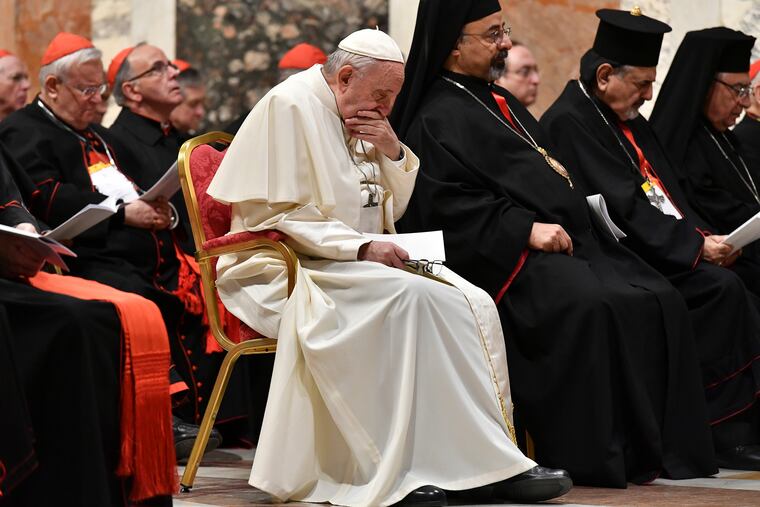5 takeaways from Pope Francis’ new reforms for handling clergy sex abuse
Pope Francis on Thursday issued a sweeping set of new church laws aimed at better policing how the hierarchy investigates claims of clergy sex abuse and cover-up, marking his most concrete effort to respond to a crisis that has threatened to overwhelm his papacy. Here are the highlights.

Pope Francis on Thursday issued a sweeping set of new Catholic Church laws aimed at better policing how the hierarchy investigates claims of clergy sex abuse and cover-up, marking his most concrete effort to date to respond to a crisis that has threatened to overwhelm his papacy. Here are some of the highlights.
1) Mandatory reporting
The new policies, outlined in what is known within the church as a motu propio, require for the first time that all of the world’s 415,000 Catholic priests and 660,000 religious sisters inform church authorities of all reports of abuse.
But the directive stops short of requiring them to go to police or other civil authorities — a nod to the Vatican’s long-held concern that doing so could endanger clerics in parts of the world where Catholics are a persecuted minority.
Bishops in the United States adopted a similar but tougher policy in the early 2000s, amid the first wave of the clergy sex abuse crisis here. The U.S. version requires dioceses to report suspected abuse to police.
2) Making it easier for victims to come forward
The church also will require every diocese to create a public, easily accessible, confidential system to field complaints of sexual abuse and cover-up.
Most dioceses in the United States already have established protocols that meet this minimum requirement, but there have been calls for further reform.
For instance, after complaints that seminarians and priests feared repercussions if they came forward to accuse their superiors, bishops here launched a confidential third-party hotline last fall for reporting abuse.
The rules issued Thursday by the Vatican establish whistle-blower protections, saying that those reporting misconduct from within the church may not suffer “prejudice, retaliation, or discrimination.” It also requires that victims be notified of the outcome of any investigation.
3) Addressing cover-ups
Thursday’s reforms recognize the cover-up of abuse complaints as a crime as serious as the abuse itself. In addition to requiring clerics to report suspected abuse, the directive also mandates that priests and religious sisters inform church authorities of “actions or omissions intended to interfere with or avoid civil investigations or canonical investigations.”
4) Investigating bishops
With its new protocols, the Vatican has overhauled its process for investigating bishops accused of failing to respond to abuse complaints — or, worse, of committing sexual misconduct themselves.
Before this, complaints were handled by Vatican investigators, who often were criticized as sluggish and opaque. Now, the Church has empowered so-called “metropolitan archbishops” — a title given to prelates tasked with both leading an archdiocese and supervising bishops in nearby dioceses — to investigate.
Under the new protocol, the metropolitan would receive a complaint and seek Vatican permission to open an investigation. Rome has 30 days to respond and, if authorized, the metropolitan archbishop has 90 days to complete his probe and develop preliminary recommendations. All results of investigations would be forwarded to the Vatican for final action.
But the regulations stop there, and already have prompted criticism from some who say the Vatican’s bureaucratic procedures also need a significant overhaul. Still, in a nod to past complaints, the new policies require Vatican offices to share more information than had been required in the past.
5) A role for lay Catholics
The Vatican guidelines cemented for the first time a role for civilian experts and church faithful in the investigation process.
Most U.S. dioceses, including Philadelphia, already rely on civilian review boards to investigate abuse claims and make recommendations to bishops. But the nation’s prelates sought to expand that role in the face of immense pressure from victims and their advocates who remain suspicious of the hierarchy’s ability to police itself.
Last fall, American bishops proposed a civilian-led panel that would investigate complaints against bishops but were blocked by the Holy See from voting on the proposal. The regulations released Thursday don’t grant lay church members as much authority but allow metropolitan archbishops to rely on lay experts and advisers while conducting investigations.